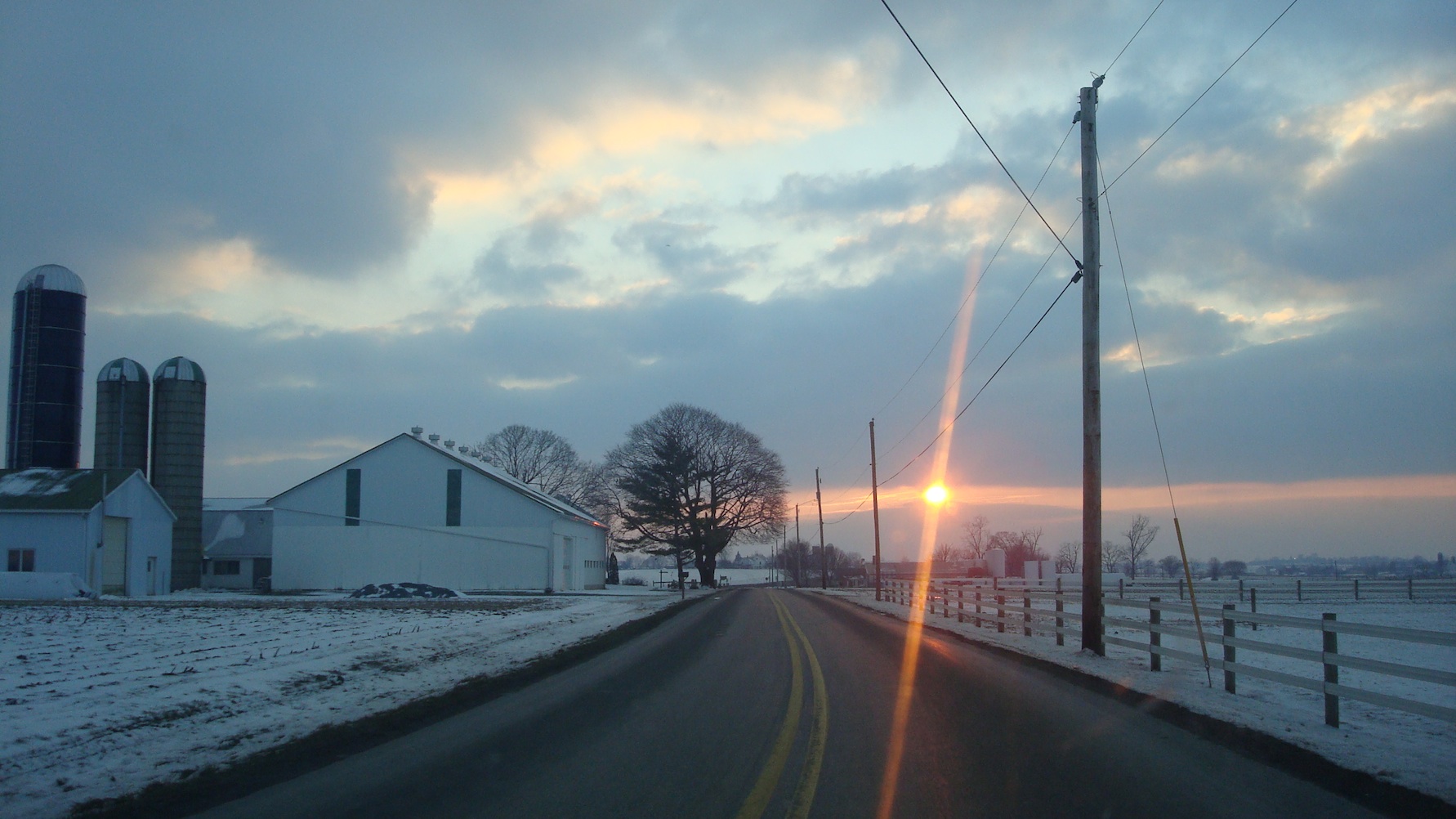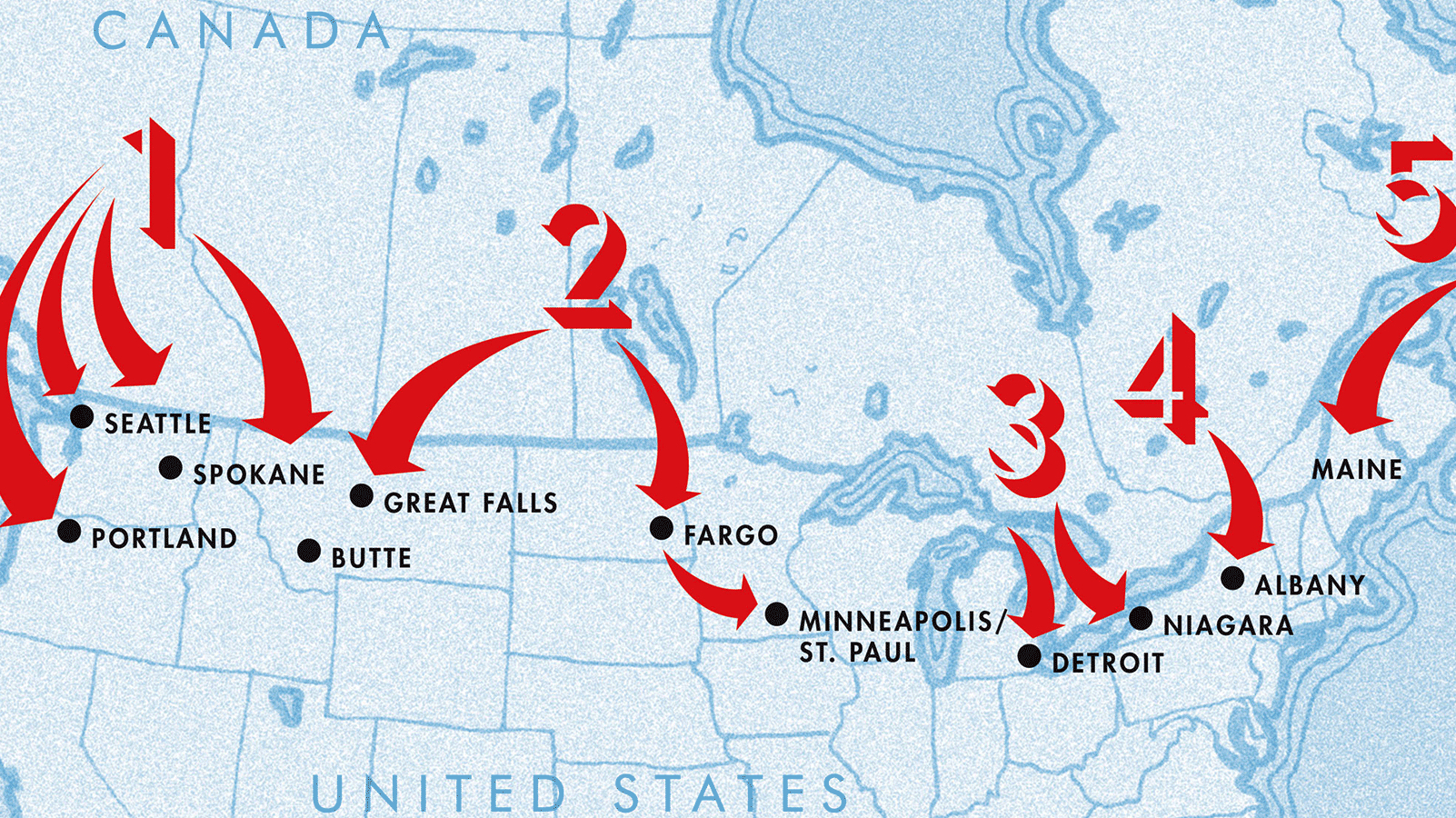This map of Hutterite colonies shows evolution at work
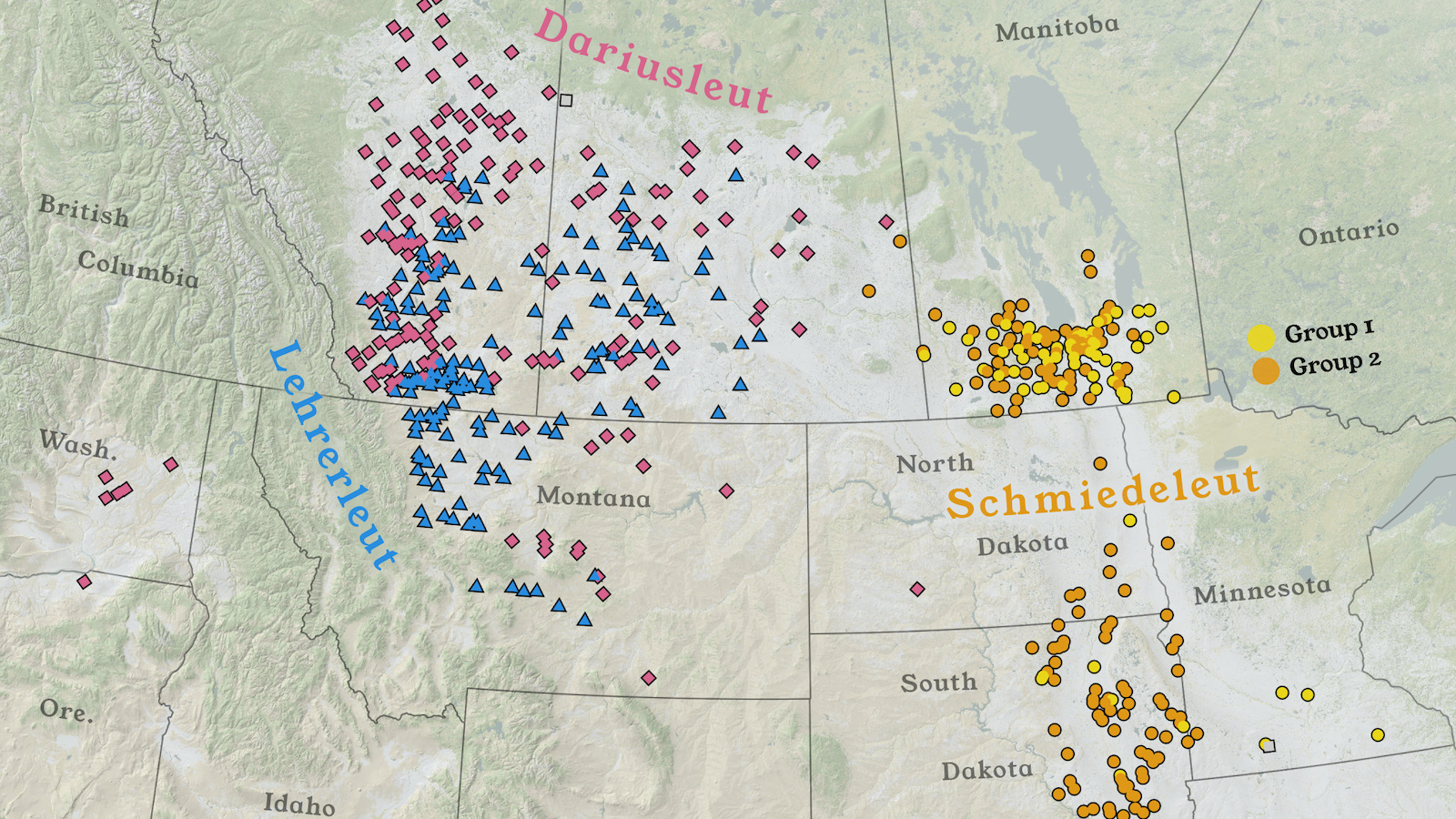
- Hutterites are the smallest of the three main Anabaptist movements (which includes the Amish).
- This map shows how its three main groups are spread across North America.
- It also illustrates evolution at work: three groups may soon turn into four.

This is a map about religion — and evolution. It shows the geographic distribution of Hutterite settlements across North America, but it’s also a snapshot of the evolutionary concept of speciation at work.
Speciation is the biological process by which a single population evolves into different species. The typical cause is geographic isolation of a subgroup, which then becomes subject to another set of environmental pressures. In combination with genetic drift, this may result in a population with distinct habits and characteristics, which is no longer able to interbreed with the original species — in other words, a new species.
Of finches and Anabaptists
Darwin got a first inkling of the concept when he observed how finches and tortoises in the Galápagos archipelago differed from island to island. The archipelago continues to fascinate evolutionary biologists. In 2017, scientists caught a population of Galápagos finches in the act of becoming a separate species — the first time speciation has been observed “live.”
It is tempting to recognize the rudiments of speciation in processes outside of biology — for example, the fractious world of religious ideas. Just look at the assorted family trees, showing the diversification over time of biological species and theological concepts. Clearly, something similar is going on here. Except that in “religious speciation,” geographic isolation typically is the effect, not the cause, which usually is some doctrinal difference of opinion — on whether to make the sign of the cross with two fingers or three, for instance.
This map of Hutterite colonies is an interesting snapshot of such religious speciation at work. With a total population of around 50,000, Hutterites are the smallest of the three major branches of the Anabaptist movement. Mennonites are the main branch (pop. 1.5 million worldwide), but everybody knows the Amish — around 360,000, mainly in the U.S. — set apart by their typical dress and their blanket rejection of modern technology.
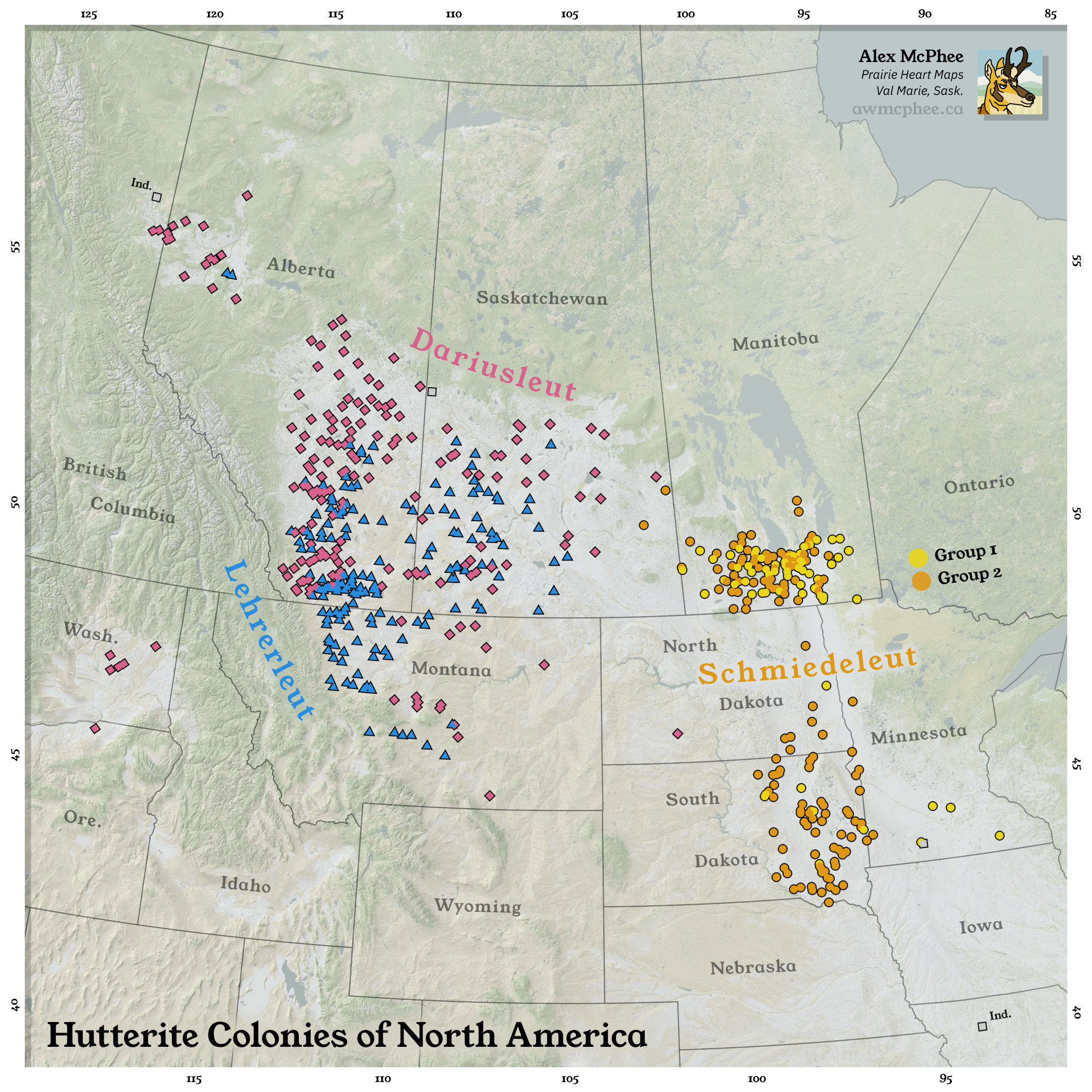
Anabaptism emerged as one of the more radical Protestant strains of the 16th-century Reformation of the church. It rejects child baptism, believing instead that candidates should be able to make a free and conscious choice for Christ as adults — hence the name for the movement, which in Greek means “to baptize again.”
Each of the three main groups is named after the religious leader that established it as a separate movement.
Christian communists
Menno Simons (1496-1561) was a Catholic priest from Friesland (northern Netherlands) who became an Anabaptist preacher and leader, instrumental in consolidating and institutionalizing the new faith. His followers were known as Mennonites.
Jakob Amann (1644- c. 1720) was a Swiss Mennonite elder who wanted to preserve what he saw as biblical discipline within the church. In the 1690s, this led to a schism. Amann’s followers were called the Amish.
Jakob Hutter (c. 1500-1536) was a hatmaker from Tyrol and an Anabaptist reformer. He led his followers, later called Hutterites, to Moravia, where they adopted the early Christian practice of communal ownership, in addition to traditional Anabaptist practices such as nonviolence and adult baptism.
Anabaptists were considered so radical that they were persecuted by Catholics and mainstream Protestants alike in Western Europe, which is why so many fled, first to Eastern Europe, then eventually to North America.
Many Hutterites in North America can trace their origin to Hutterdorf, a Hutterite colony in Ukraine and the source of a very successful “back to basics” campaign. This is because, by the mid-19th century, most Hutterites no longer lived in strict community of goods.
In 1859, Michael Waldner was one of the leaders of a congregation in Hutterdorf that reintroduced the practice. The group became known as the Schmiedeleut (“people of the blacksmith”), after Waldner’s profession. The next year, another group did the same on the other side of town. Their leader was Darius Walter, and they became the Dariusleut. Around 1875, both groups emigrated to South Dakota. Then, arriving in South Dakota a few years later, a third group of Ukrainian Hutterites under the leadership of teacher Jakob Wipf became known as the Lehrerleut (“people of the teacher”).
Relocation to Canada
Hutterites established small farming settlements (called “colonies”), which grew rapidly in number because of the groups’ high birth rates. In the years immediately after World War I, due to anti-pacifist and anti-German sentiment in the U.S., many Hutterites relocated to Alberta in Canada.
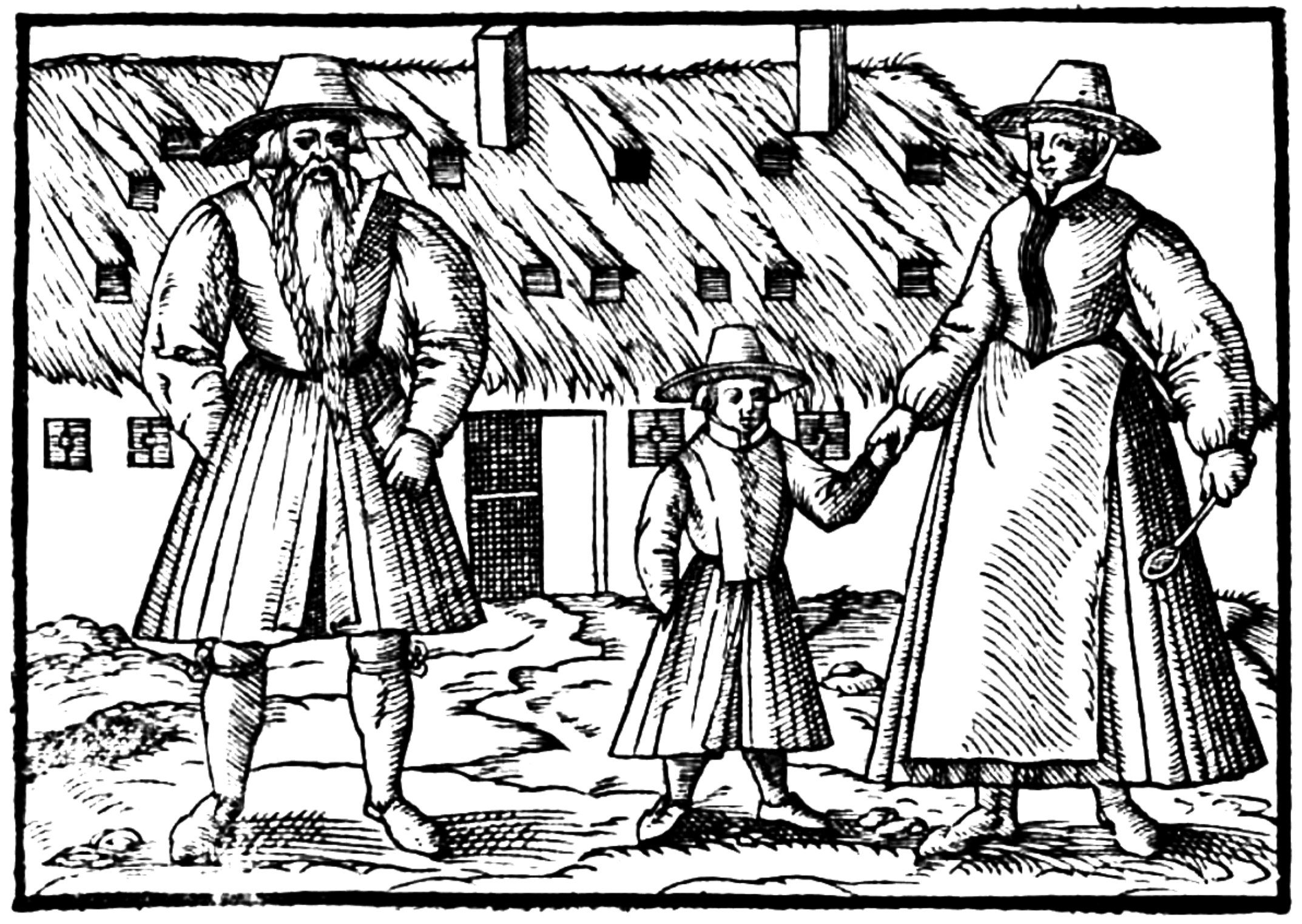
In the following decades, as the animosity wore off, many new Hutterite colonies were established south of the border. As the map shows, Hutterites now live on either side of the U.S.-Canada border. The map also shows how the Hutterite movement’s three branches cluster together geographically:
- The Dariusleut are mainly in the Canadian prairie provinces of Alberta and Saskatchewan;
- The Lehrerleut are in the same two provinces, but with a center of gravity in southern Alberta and significant spillover into the U.S. state of Montana.
- The Schmiedeleut have two main centers: one in southern Manitoba, staying just clear of the U.S. border; the other in eastern South Dakota, with a sprinkling of colonies in between.
As indicated by the map, the Schmiedeleut themselves seem to be in the process of dividing into two distinct groups — just like those finches in the Galapagos. In the early 1990s, various disagreements led to a split between a group of Schmiedeleut who were slightly more accommodating of certain innovations (led by Jacob Kleinsasser) and a more conservative group. The Kleinsasser group are known as the “Hutterian Brethren,” or simply generically as Group 1. They are nicknamed “Oilers.” The more traditionally minded Group 2 is also known as “Committee Hutterites,” and nicknamed “Gibbs.”
Connecting the dots
Hutterites live in rural communities, speak a German dialect, and dress conservatively, so they are often mistaken for members of the other Anabaptist movements. However, unlike the Amish, they do use electricity and other modern technology. And unlike both the Amish and the Mennonites, they continue to practice communal living.
One way to visually distinguish the various Hutterite subgroups from each other is by the size of the polka dots on the women’s scarves. Lehrerleut women have scarves with large dots, Dariusleut scarves have smaller dots, and Schmiedeleut ones have very small dots, or none at all. No wonder they are considered the most progressive of the Hutterites.
Map produced by Alex McPhee, reproduced with kind permission. Mr. McPhee is an independent cartographer based in Grasslands National Park, Canada. Check out his web page and his Twitter.
Strange Maps #1118
Got a strange map? Let me know at strangemaps@gmail.com.
Follow Strange Maps on Twitter and Facebook.
